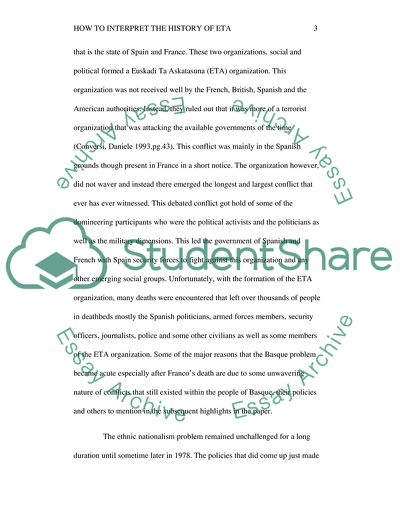Cite this document
(How to Interpret the History of ETA Report Example | Topics and Well Written Essays - 2250 words, n.d.)
How to Interpret the History of ETA Report Example | Topics and Well Written Essays - 2250 words. https://studentshare.org/history/1853743-discuss-why-and-to-what-extent-the-basque-problem-became-more-acute-after-francos-death
How to Interpret the History of ETA Report Example | Topics and Well Written Essays - 2250 words. https://studentshare.org/history/1853743-discuss-why-and-to-what-extent-the-basque-problem-became-more-acute-after-francos-death
(How to Interpret the History of ETA Report Example | Topics and Well Written Essays - 2250 Words)
How to Interpret the History of ETA Report Example | Topics and Well Written Essays - 2250 Words. https://studentshare.org/history/1853743-discuss-why-and-to-what-extent-the-basque-problem-became-more-acute-after-francos-death.
How to Interpret the History of ETA Report Example | Topics and Well Written Essays - 2250 Words. https://studentshare.org/history/1853743-discuss-why-and-to-what-extent-the-basque-problem-became-more-acute-after-francos-death.
“How to Interpret the History of ETA Report Example | Topics and Well Written Essays - 2250 Words”. https://studentshare.org/history/1853743-discuss-why-and-to-what-extent-the-basque-problem-became-more-acute-after-francos-death.


